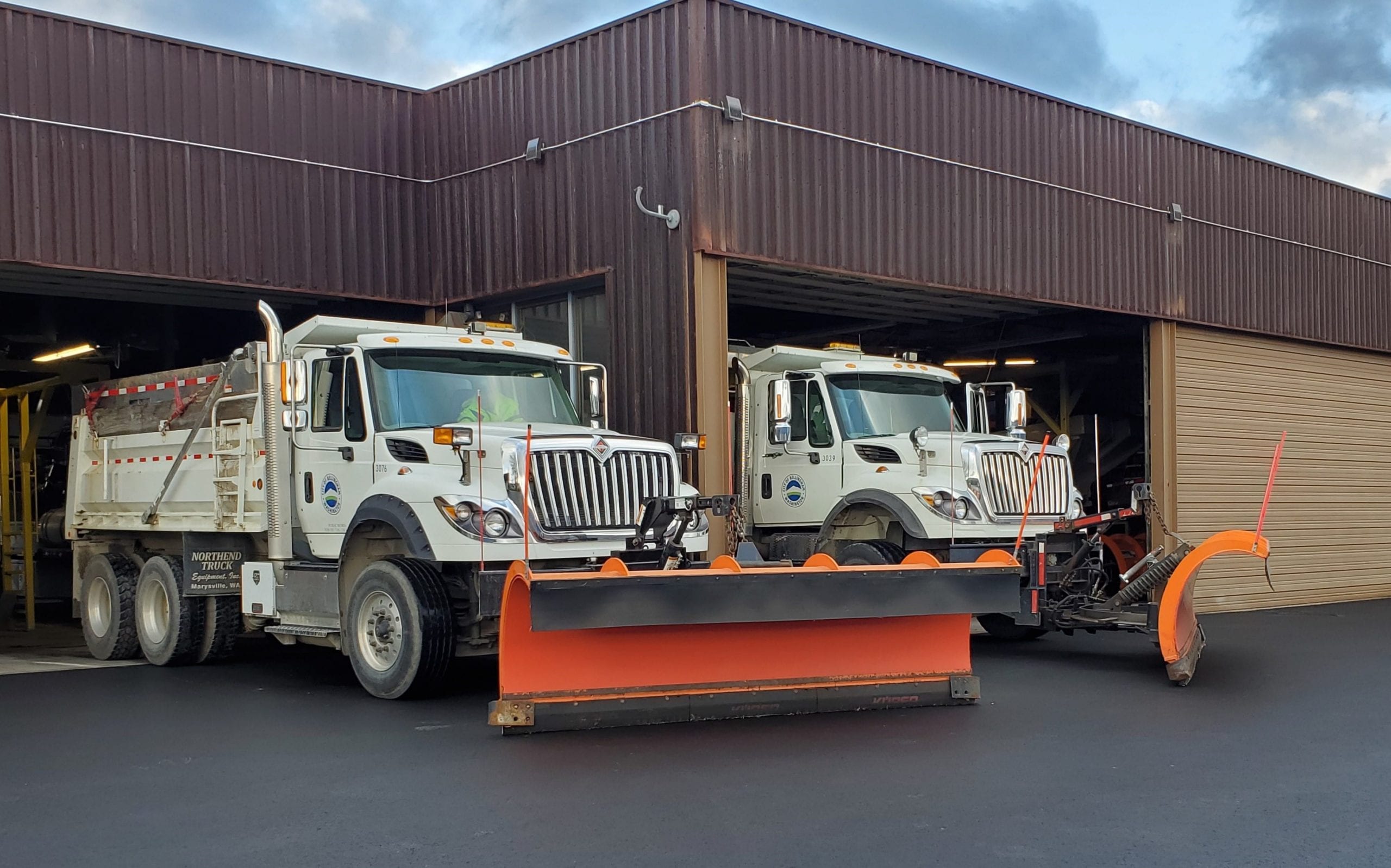Well before any snow or ice arrives, City of Bellingham Public Works crews prepare for winter weather. The City's five large sanders and plows and three trucks that can be fitted with sanders or plows have been prepared for the coming cold. Even before plowing, the vehicles are used to prepare the streets for ice and snow.
According to Dan Larsen, Public Works Street Division supervisor, “If we're able to get brine solution on the roads before a snow and ice event it makes almost a barrier between the road and the ice so that we can plow it up much better. It's like jelly in a PB&J sandwich. Helps the peanut butter slide right off.”
Crews travel through the City's six snow routes on three shifts per day laying down deicer. When the weather is cold enough, remaining dry and in the teens, crews may use Boost™ (beet juice) – which keeps ice from forming.
Once snow and ice are already on the streets, City crews use straight salt in the downtown corridor and around Lake Whatcom.
“We avoid sand in these areas to keep silt and dirt out of our basins and the lake,” says Larsen. On other routes crews use a sand-to-salt mixture of 4:1. After the weather changes, all that sand must be swept up by the City.
The City's snow routes – which cover much of the City's 300 lane miles of streets – are arterials and some secondary arterials, highly traveled routes and those essential for Police, Fire and Whatcom Transportation Authority (WTA) and Bellingham schools. That means that secondary and some residential streets will be untreated and likely slippery.
FAQ and more:
How much sand, salt and brine does the City have on-hand? Are you able to get more if needed?
We currently have about 1,500 tons of salt plus 20,000 gallons of salt brine and 5,000 gallons of Boost (beet juice) on hand. That's enough for roughly four weeks of snow. More is available on stand-by.
Does the City use chemicals for de-icing?
The chemical that some are worried about for snow and ice removal is Magnesium Chloride – which the City does not use because it's not good for fish or streams. We have never used it and won't. We are all-natural: salt, sand and water.
How do you decide whether to use salt versus sand?
The main problem is sand is that it doesn't break down the ice, it just sits on top. Salt will break down the ice. Also, sand will clog the pervious concrete, which means water filtration can't happen. And sand carries phosphorous, which we're trying like the dickens to keep out of Lake Whatcom – our drinking water source. Here's a link to more about that: https://www.cob.org/Documents/pw/lw/rg-phosphorous.pdf. Phosphorous is a greater hazard to our water than salt.
What are the City's deicing routes?
Found here https://www.cob.org/services/transportation/Pages/snow-and-ice-removal.aspx
What is the protocol for street preparation and plowing?
- Here is a link to the City's winter weather protocols – https://www.cob.org/services/transportation/Pages/snow-and-ice-removal.aspx
- Plowing typically starts when four inches of snow has accumulated and is forecast to continue;
- Four-lane roads initially have only one lane plowed in each direction with additional lanes open as time and conditions permit; and
- Access to side streets are cleared only after the priority routes are completely cleared.
For more information check Washington State Department of Transportation's winter driving page.

